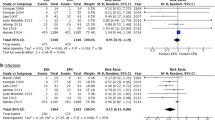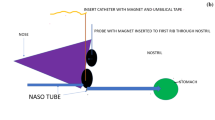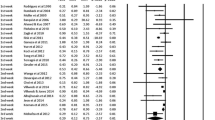Abstract
Gastroschisis is traditionally managed by primary closure (PC) or delayed closure after surgical silo placement. Bedside insertion of preformed silos (PFS) and delayed closure has become more widespread, although its benefits remain unclear. To identify differences in outcome of infants managed with PFS compared with traditional closure (TC) techniques. Single-centre retrospective review of 53 consecutive neonates admitted between February 2000 and January 2006. Data expressed as median (range). Non-parametric statistical analysis used with P < 0.05 regarded as significant. Forty infants underwent TC and 13 had PFS and delayed closure. Median ventilation time in both groups was 4 days (P = 0.19) however this was achieved with higher mean airway pressures (MAPs) (day 0, 10 (5–16) versus 8 (5–10) cmH2O; P = 0.02) and inspired oxygen (40 (21–100) versus 30 (21–60)%; P = 0.03) in TC group. Urine output on day-1 of life was significantly higher in PFS group (1.1 (0.16–3.07) versus 0.45 (0–2.8) ml/kg/h; P = 0.02). Inotrope support was required in 17/40 (43%) of TC versus 0/13 (0%) in PFS (P < 0.01). After exclusion of infants with short bowel syndrome and/or intestinal atresia (n = 9), there was a shorter time to full enteral feeds in the TC group (22 (12–36) versus 27 (17–45); P = 0.07), although there was no difference in the period of parenteral nutrition (PN) (P = 0.1) or overall hospital stay (P = 0.34). No deaths or episodes of necrotizing enterocolitis occurred. The use of PFS for gastroschisis closure is associated with a reduction in pulmonary barotrauma, better tissue perfusion and improved early renal function, consistent with a reduction in abdominal compartment syndrome.




Similar content being viewed by others
References
Yaster M, Buck JR, Dudgeon DL, et al (1988) Hemodynamic effects of primary closure of omphalocele/gastroschisis in human newborns. Anesthesiology 69:84–88
Lacey SR, Carris LA, Beyer AJ III, et al (1993) Bladder pressure monitoring significantly enhances care of infants with abdominal wall defects: a prospective clinical study. J Pediatr Surg 28:1370–1374
Kidd JN Jr, Jackson RJ, Smith SD, et al (2003) Evolution of staged versus primary closure of gastroschisis. Ann Surg 237:759–764
Schlatter M, Norris K, Uitvlugt N, et al (2003) Improved outcomes in the treatment of gastroschisis using a preformed silo and delayed repair approach. J Pediatr Surg 38:459–464
Davenport M, Haugen S, Greenough A, et al (2001) Closed gastroschisis: antenatal and postnatal features. J Pediatr Surg 36:1834–1837
Fischer JD, Chun K, Moores DC, et al (1995) Gastroschisis: a simple technique for staged silo closure. J Pediatr Surg 30:1169–1171
Minkes RK, Langer JC, Mazziotti MV, et al (2000) Routine insertion of a silastic spring-loaded silo for infants with gastroschisis. J Pediatr Surg 35:843–846
Wu Y, Vogel AM, Sailhamer EA, et al (2003) Primary insertion of a silastic spring-loaded silo for gastroschisis. Am Surg 69:1083–1086
Owen A, Marven S, Jackson L, et al (2006) Experience of bedside preformed silo staged reduction and closure for gastroschisis. J Pediatr Surg 41:1830–1835
Laubscher B, Greenough A, Dimitriou G, et al (1998) Serial lung volume measurements during the perinatal period in infants with abdominal wall defects. J Pediatr Surg 33:497–499
Puffinbarger NK, Taylor DV, Tuggle DW, et al (1996) End-tidal carbon dioxide for monitoring primary closure of gastroschisis. J Pediatr Surg 31:280–282
Banieghbal B, Gouws M, Davies MR (2006) Respiratory pressure monitoring as an indirect method of intra-abdominal pressure measurement in gastroschisis closure. Eur J Pediatr Surg 16:79–83
Kidd JN, Levy MS, Wagner CW (2001) Staged reduction of gastroschisis: a simple method. Pediatr Surg Int 17:242–244
Chiu B, Lopoo J, Hoover JD, et al (2006) Closing arguments for gastroschisis: management with silo reduction. J Perinat Med 34:243–245
Bryant MS, Tepas JJ III, Mollitt DL, et al (1989) The effect of initial operative repair on the recovery of intestinal function in gastroschisis. Am Surg 55:209–211
Driver CP, Bowen J, Doig CM, et al (2001) The influence of delay in closure of the abdominal wall on outcome in gastroschisis. Pediatr Surg Int 17:32–34
Cusick E, Spicer RD, Beck JM (1997) Small-bowel continuity: a crucial factor in determining survival in gastroschisis. Pediatr Surg Int 12:34–37
Driver CP, Bruce J, Bianchi A, et al (2000) The contemporary outcome of gastroschisis. J Pediatr Surg 35:1719–1723
Acknowledgments
We acknowledge the considerable amount of work involved in the care of these infants, but particular thanks to Drs S. Hannam, A. Lall, S. Lee, S. Devane and S. Haugen.
Author information
Authors and Affiliations
Corresponding author
Rights and permissions
About this article
Cite this article
Allotey, J., Davenport, M., Njere, I. et al. Benefit of preformed silos in the management of gastroschisis. Pediatr Surg Int 23, 1065–1069 (2007). https://doi.org/10.1007/s00383-007-2004-9
Accepted:
Published:
Issue Date:
DOI: https://doi.org/10.1007/s00383-007-2004-9




